Patrick Kennedy & Jack Ford
Easing the Stigma of Mental Illness and Addiction
By Yolanda Navarra Fleming
 If anyone can speak with authentic candor to a ballroom full of people about behavioral health and addiction, and make them simultaneously laugh out loud and nod in empathy, it’s Patrick J. Kennedy II, the former U.S. Congressman, mental health advocate and author of the New York Times Bestselling book titled A Common Struggle: A Personal Journey Through the Past and Future of Mental Illness and Addiction (Blue Rider Press, New York, 2016).
If anyone can speak with authentic candor to a ballroom full of people about behavioral health and addiction, and make them simultaneously laugh out loud and nod in empathy, it’s Patrick J. Kennedy II, the former U.S. Congressman, mental health advocate and author of the New York Times Bestselling book titled A Common Struggle: A Personal Journey Through the Past and Future of Mental Illness and Addiction (Blue Rider Press, New York, 2016).
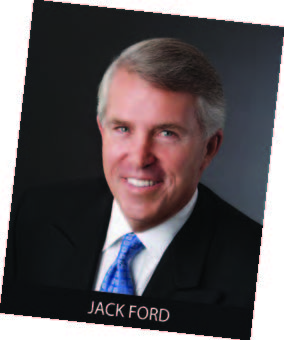 In October 2018, the Trinitas Health Foundation launched their Peace of Mind Campaign with an informative evening with Journalist Jack Ford moderating a conversation with Kennedy on “Easing the Stigma about Behavioral Health” at The Park Savoy Estate, Florham Park.
In October 2018, the Trinitas Health Foundation launched their Peace of Mind Campaign with an informative evening with Journalist Jack Ford moderating a conversation with Kennedy on “Easing the Stigma about Behavioral Health” at The Park Savoy Estate, Florham Park.
 The event raised $235,000 toward the $4 million renovation project to update Trinitas’ Behavioral Health facility, one of the most comprehensive departments of behavioral health and psychiatry in New Jersey. They offer specialized services for adults, children and their families, as well as services for those with various addictions, and a 98-bed inpatient facility. The hospital welcomes nearly 200,000 behavioral health visits per year. The multi-disciplinary and bi-lingual staff includes psychiatrists, psychologists, social workers, nurses, creative arts therapists, substance abuse counselors and mental health workers, offering such services as psychiatric, emergency response/screening center, inpatient, outpatient, partial hospital programs and addiction services.
The event raised $235,000 toward the $4 million renovation project to update Trinitas’ Behavioral Health facility, one of the most comprehensive departments of behavioral health and psychiatry in New Jersey. They offer specialized services for adults, children and their families, as well as services for those with various addictions, and a 98-bed inpatient facility. The hospital welcomes nearly 200,000 behavioral health visits per year. The multi-disciplinary and bi-lingual staff includes psychiatrists, psychologists, social workers, nurses, creative arts therapists, substance abuse counselors and mental health workers, offering such services as psychiatric, emergency response/screening center, inpatient, outpatient, partial hospital programs and addiction services.
Trinitas provides treatment for patients like Kennedy, who was diagnosed with asthma as a child, and went on to suffer through a lifetime of depression, bipolar disorder and substance use, which included many failed attempts at sobriety until he arrived at the right balance of medication and alternative therapies.
Patrick Kennedy, son of the late Senator Edward “Ted” Kennedy and Joan Kennedy, has fully embraced his DNA. He has worked tirelessly to shed new light on the struggle with mental illness and addiction that hang—now in plain view—on numerous branches of his family tree. In true Kennedy fashion, he is in the public eye working to right certain wrongs, more specifically, to get the world on board with the fact that the brain is part of the body and requires (and deserves) proper medical attention just like any other part. But unlike the Kennedys before him, he practices a sort of transparency that he recognizes as his destiny, which he fully owns both in spite of his DNA and because of it. In his book, he admits to the mistakes he has been hardwired to make and since then, has made easing the stigma of behavioral health his sole mission.
His passion was contagious when he and journalist Jack Ford discussed Patrick’s position as the nation’s leading political voice on mental illness, addiction, and other brain diseases. Ford’s focus on the subject stems from the fact that his father died from alcoholism at age 49.
Kennedy’s efforts to create stronger advocacy for all types of mental health and substance use disorders, have manifested in, among other things, lead sponsorship of the Mental Health Parity and Addictions Equity Act of 2008, as well as the creation of two nonprofit organizations—The Kennedy Forum and One Mind, which aim to provide and encourage groups that would normally compete for research dollars and support in other forms, to join forces.
The Kennedy Forum leads a national dialogue on transforming mental health and addiction care delivery by uniting mental health advocates, business leaders, and government agencies around a common set of principles. One Mind pushes for greater global investment in brain research, which Kennedy has called “the next great frontier in medicine,” and is pioneering a worldwide approach to make scientific research, results, and data available to researchers everywhere.
Progress has been made, but Kennedy says there is much more that can be done to encourage acceptance that brain illnesses should be treated with the same level of concern and respect as other diseases of the body such diabetes, cancer, heart disease, etc.
Here is a large portion of their conversation.
Jack Ford: You have clearly become one of the champions in the area of mental health and addiction. …You have been very open and candid in your book talking about your own life and your own struggles. There has always been a spotlight on the Kennedy family, and it’s something you cannot run and hide from. But what made you decide to step into that spotlight to talk about this in your own personal journey?
Patrick Kennedy: …I didn’t ask to be here as the advocate for mental health and addiction. I never wanted to be here at a podium being asked about this part of my life… and living in a family that also suffered from mental health and addiction. You got me by default. I became the leader of mental health and addiction policy in this country because I put my name on a bill that said the brain was part of the body. I never expected to be the first name on the bill. I thought because in my father’s case it took him 50 years in the US Senate before he got sponsored whatever he wanted because he was in the Senate longer than almost anyone else and he was chair of the big committees. So it was odd that as the youngest member of Congress, at 27, from the smallest state in the country and in the minority party, and as the lowest guy on the totem pole I got the chance to put my name number one. I got to be the sponsor. How in the world does that happen? Because no one else wanted to have to go in front of the cameras and have Jack ask them the same question he just asked me. That is the honest-to-God truth. No politician wanted to get up there and say they’re a champion of mental health, knowing that all of us are affected by it, and then have a press person ask about our own family situations. Because if we said anything, well, that yarn just spools right out and where do you reign it back in? And so you’re in trouble. If you say you’ve never been to treatment yourself, then you’re a one-termer. You say it’s happened to anyone in your family and you’re in the dog house with them, and you might be affecting their mental health by outing them involuntarily. So, there is no good minefield to walk through on this. And if you say no, they’ll think you’re a liar. So that’s why no one else wanted to put their name first.
I put my name first, not because…I keep reminding my Republican colleague Jim Ramstad, who I co-sponsored this with, he goes…if your uncle were alive he’d put you in a chapter in his book Profiles in Courage, but I have to tell everyone…the only reason I came out was because the guy I was in drug treatment with sold his story about being in drug treatment with me to the National Inquirer, which meant my face was on the cover (with the headline), “Patrick Kennedy: Cocaine Addict.” When I got up one morning, I was a second-term member of the State Legislature, and that was on every check-out counter in my district. I thought I was all done, as you would expect. I represented a very conservative neighborhood in Providence, RI, in the State House. The good thing is that my neighborhood was predominately Italian-American. Even though no one liked a drug addict, they really didn’t like someone who ratted on a drug addict. My posse…we started a re-election bid on “We’re not for the Rat Bastards; we’re for Patrick Kennedy.” That was my campaign slogan.
JF: That sounds like a skit from Saturday Night Live.
PK: Life is often like that.
JF: You’re right. So you became the lead sponsor with a bi-partisan backing, signed into law in 2008 by President George W. Bush. The title of the act is the Mental Health Parity and Addiction Equity Act. Why did you feel there was a need for the Federal Government to pass this act and what were you hoping it would provide?

Jill Sawers, Campaign Co-Chair & Trinitas Health Foundation Trustee Chair
PK: I was incredibly blessed because everything I was exposed to in life kind of set me up for this. If I look back on my life now, I could never have orchestrated the way it turned out, in a better way for me. My Aunt Eunice started Special Olympics with my grandmother. My family was steeped especially in the Disability Rights Movement, my father worked on the Americans with Disabilities Act. I was very sensitized to people who were treated as “the other,” particularly if they had a brain illness of some kind. My Aunt Rosemary, frankly, had a lobotomy because of her psychiatric disorder. Most people don’t know that. She had a mild form of intellectual disability. And yet, like many people, a certain percentage of those with intellectual disability also have psychiatric disorders. Everything I’ve read and learned about my Aunt Rosemary, leads me to conclude she had a psychiatric disorder, which really unnerved my grandfather, as it would any parent. At that time, lobotomy was the standard form of therapy. When that didn’t go well, she was banished from my family, and was sent to Wisconsin and wasn’t seen again by any member of my family, until after my grandfather had a stroke. My grandfather never saw her again after the lobotomy. That shame was so deep in my family that it transmitted itself through my father’s generation. When I think about my father’s inability to address what’s right in front of him, …he had learned and become very good at denial. It allowed him to survive things that…no one could survive what my father survived.

Deborah Q. Belfatto, Campaign Co-Chair & Trinitas Health Foundation Trustee
I was sensitized to that and to growing up with my mother being vilified because of her alcoholism. She would walk through the house inebriated in the middle of the day. My dad would have all of our nation’s leaders come to our house, people you would recognize and know of, and none of them would look up when my mother walked through the hallway. As a kid, I totally got the message to get her back in the room and shut the door. My brother, sister and I spent our childhoods doing all we could to hide our mother so she wouldn’t embarrass anybody. That was on family vacations, in our house and everywhere we went. I never got to connect with my mother on an emotional level because she was so debilitated by her illnesses, both alcoholism and severe depression, but I felt the need to defend her. Throughout my life, that’s what I took on.
I really feel blessed that I was able to support this bill and that, ironically, the House version of the bill covered alcoholism and depression and the Senate version of the bill did not. I could not get any agreement between the House and the Senate versions. But when my dad got brain cancer and he was home and nearing the end of his life, I asked him to help get the House version passed. He told me to call Chris Dodd, his best friend. …four days later, the market collapsed and the banks in this country went belly-up, and all of a sudden, Chris Dodd became somebody. He was Chairman of the Banking Committee and all of a sudden he was the most important man in Washington, D.C. That was four days after I asked for his help to get HR1424, the Mental Health Parity and Addiction Equity Act passed.
He called me back and said, “Patrick, we have to pass this bail-out of our nation’s banks. It’s going to cost the taxpayers between $700 and 800 billion dollars. None of us wants to vote for it, but we know if we don’t, our country could end up in another Great Depression. That was the feeling on Wall Street and around the country at that time. He said, “I have an idea.” I said, “What’s that?” He said, “How about I write the whole Toxic Acid relief program into your bill, the Mental Health Parity and Addiction Equity Act.” And I said, “You can do that?” And he said, “Yes, I’m Chairman of the Banking committee.” And that’s exactly what he did. And because of that, we got the whole DSM (Diagnostic Statistical Manual for all mental illnesses) covered in the Parity law, which we never would have gotten if it was on its own. Just to give you a quick flash of what a Conference Committee is, it’s when the Senate sponsors meet with the House sponsors. Pete Domenici said to me, “I’ll be damned if I let those addicts sink our bill.” And frankly, he was right. If we had added addiction, there was no way the Congress of the U.S. would have passed that. There would be no way we could pass that bill today for the same reasons.
There is no advocacy out there in this country. None! Facing addiction… You could fill this whole house with the members nationwide. Faces and Voices probably would fit in the room back here. NAMI (National Alliance on Mental Illness) does a great job, but they’re a fraction of what they really represent in terms of the populations affected by these illnesses. Bottom line, the reason we don’t get anywhere on these illnesses, is the stigma is so great that no one is willing to come up like HIV-AIDS, who knows. If they could do it, we should be able to do it. But frankly, I think the stigma is even greater than even cancer. That’s the big problem.
JF: Why do you think that is? I had a conversation with someone recently on my PBS show about this. They said something to me, and I hadn’t thought of this. So much of it has to do with words. For instance, if you’re talking about someone who has “substance abuse,” what does that say as opposed to “substance disorder?” I thought about it. I realized, and I make my living with words, the words you use can be extraordinarily impactful. What do you think it is that drives this notion of the stigma that attaches to mental illness and addiction?
PK: …It cuts to the heart of it, and that is who we are as people. We’re talking about our agency, our ability to be considered of right mind. Who amongst us wants to be saddled with the label that somehow we’re not “all there,” that we’re not in full possession of our mental faculties. That, my friends, is why there’s stigma because there’s no one out there who wants to be seen in a way that’s pitiful. …There is nobody who can get past the fact that if you admit that you have one of these illnesses people are going to not only look at you different, but you’re going to have an immediate liability in dealing with them and other people for the rest of your life. They’re always going to look at you in that prism. Are they all right today? Are they on their meds? People make judgments. It’s very disconcerting.
JF: How can we combat that? Like you said, it gets to the core of who we are in the notion of your defense mechanisms and how you want to view yourself. As an aside, I interviewed an Iraq War veteran who lost both legs and part of an arm and suffered a head injury. The first day after his surgery, he was ready to get up and start his rehab, but he wouldn’t talk about his brain injury. When I asked him, he echoed what you said. He said, I can lose my arms and I can lose my legs and I can still function and remember that I was a soldier. But I can’t look my comrades in the eye if they think there’s something missing. So how do we deal with that?

Susan Head, Campaign Co-Chair & Trinitas Health Foundation Trustee
PK: …We have to deal with each other based upon a sense of compassion and not judgment, in that respect. The way we’re all conditioned is to give people value based on all of these other characteristics besides who they are as human beings, and what matters most is how you connect with someone. Mental illness and addiction do not need to impair the human connection, even while it can impair the way communication takes place because of the impairments from these illnesses. But people can show human warmth and love, and that has to be the essential element. I’m a real believer these days in seeing the spark of divinity in every person because every person has his own set of gifts. It may be more difficult to see to find those gifts in some people than in others, but if you spend time because you know we’re all children of God, and they’re going to teach you something you didn’t know before and they’re going to add to your life in some other way…that, I think, is the revolutionary change. That leads to a whole different paradigm in the way people relate to each other. That’s the paradigm that’s going to heal this stigma. It has to be a spiritual solution.
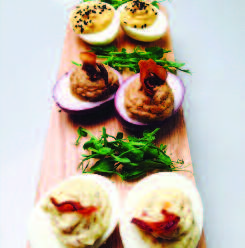 Paragon Tap & Table • Deviled Egg Trio
Paragon Tap & Table • Deviled Egg Trio  BoulevardFive72 • Boat Scallops
BoulevardFive72 • Boat Scallops Arirang Hibachi Steakhouse • Wasabi Crusted Filet Mignon
Arirang Hibachi Steakhouse • Wasabi Crusted Filet Mignon 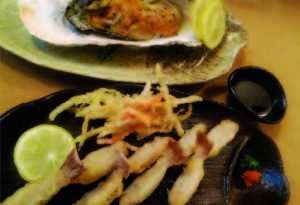 Daimatsu • Grilled Oyster
Daimatsu • Grilled Oyster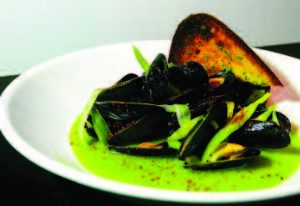 Publick House • PEI Mussels
Publick House • PEI Mussels  Luciano’s Ristorante & Lounge • Jumbo Lump Crab Cake Bruschetta
Luciano’s Ristorante & Lounge • Jumbo Lump Crab Cake Bruschetta Morris Tap & Grill • Buffalo Chicken Mac and Cheese
Morris Tap & Grill • Buffalo Chicken Mac and Cheese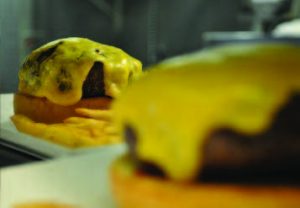 Spirit: Social Eatery and Bar • Double Cheddar Infused Burger
Spirit: Social Eatery and Bar • Double Cheddar Infused Burger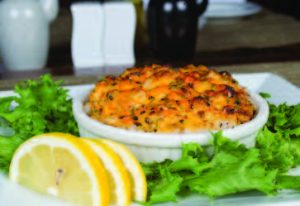 Arirang Hibachi Steakhouse • Volcano Roll
Arirang Hibachi Steakhouse • Volcano Roll  Galloping Hill Caterers
Galloping Hill Caterers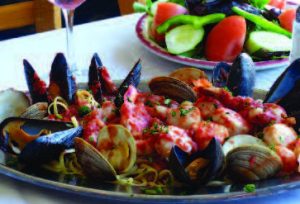 The Barge • Cioppino
The Barge • Cioppino 













 And so are the other five “smalls” we order to start our evening at Common Lot, a BYOB down the street from the venerable Papermill Playhouse, where Central Jersey
And so are the other five “smalls” we order to start our evening at Common Lot, a BYOB down the street from the venerable Papermill Playhouse, where Central Jersey  Why, I thought, haven’t I had plancha-seared shrimp like those served at Common Lot? Here, the kitchen
Why, I thought, haven’t I had plancha-seared shrimp like those served at Common Lot? Here, the kitchen  WINE TALK
WINE TALK “True voices in restaurants are in short supply. That is sad. Many diners don’t even know, let alone understand, what a voice in food is.”
“True voices in restaurants are in short supply. That is sad. Many diners don’t even know, let alone understand, what a voice in food is.” FOLLOW YOUR NOSE
FOLLOW YOUR NOSE





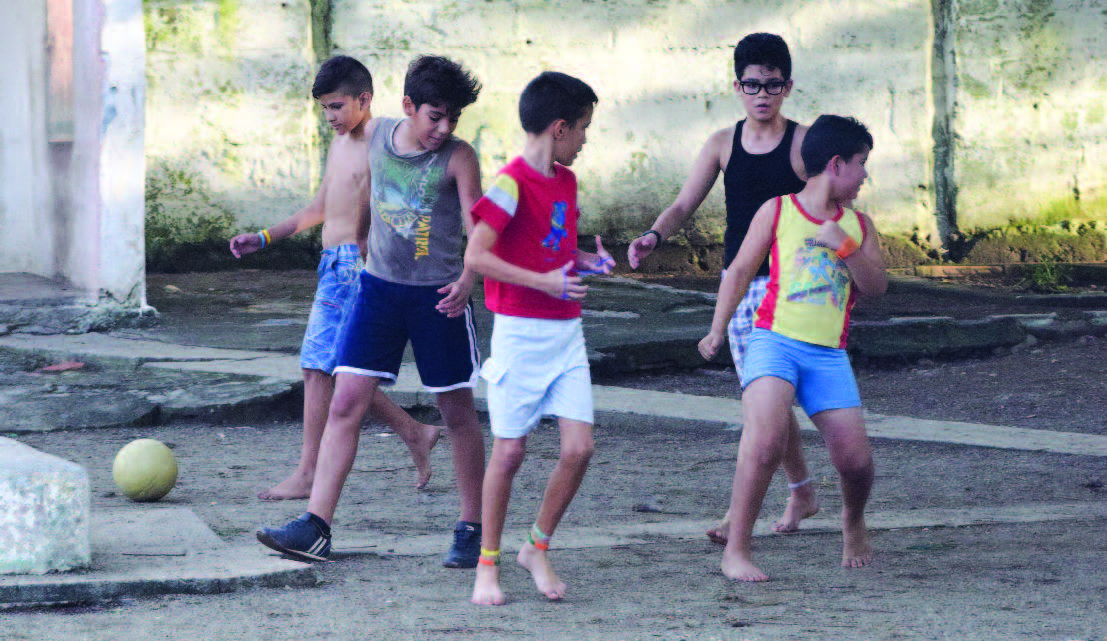







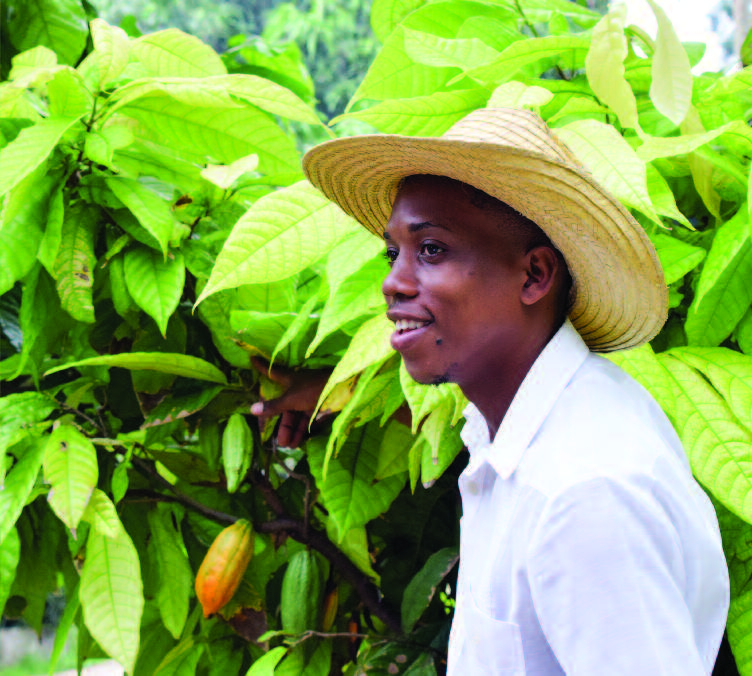
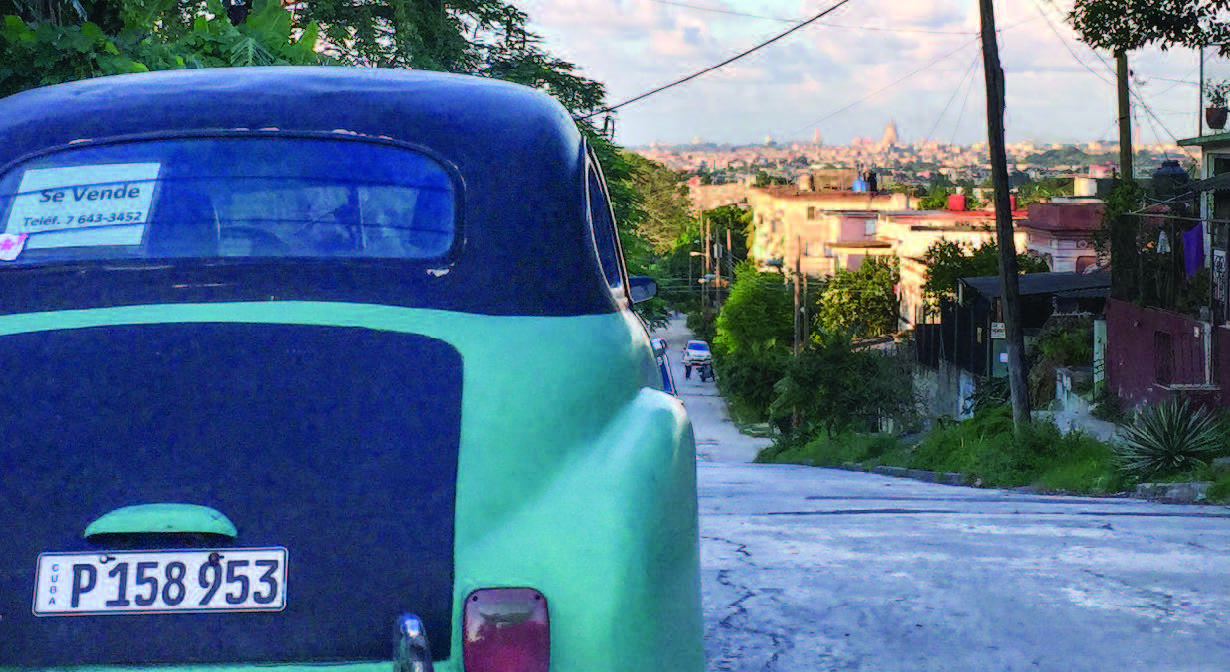



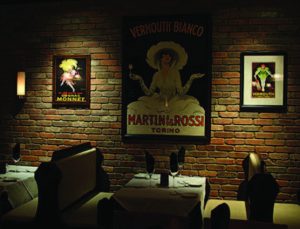 I recall reading Clydz’s press materials sent to me at The Asbury Park Press, where, at the time, I worked as the restaurant critic. What are these Clydz people thinking? I said to myself. They are not following the rules.
I recall reading Clydz’s press materials sent to me at The Asbury Park Press, where, at the time, I worked as the restaurant critic. What are these Clydz people thinking? I said to myself. They are not following the rules.
 I’ll rattle off a few of the favorites: Corpse Survivor II (Death’s Door, Lillet, Cointreau, absinthe, lemon juice; can anybody fill us in on the composition of Corpse Survivor the First?); French 55 (Champagne, Zubrowka, St. Germain, pineapple juice, lemon); Holiday Inn (strawberry-infused vodka, St. Germain, cucumber, lime); Cyn City (Hayman’s Old Tom, Cynar, lemon, simple syrup, mint, ginger beer); Jersey Sazerac (Laird’s Applejack, Pernod, maple bitters, simple syrup)…you get the idea. These Clydzians are into complicated.
I’ll rattle off a few of the favorites: Corpse Survivor II (Death’s Door, Lillet, Cointreau, absinthe, lemon juice; can anybody fill us in on the composition of Corpse Survivor the First?); French 55 (Champagne, Zubrowka, St. Germain, pineapple juice, lemon); Holiday Inn (strawberry-infused vodka, St. Germain, cucumber, lime); Cyn City (Hayman’s Old Tom, Cynar, lemon, simple syrup, mint, ginger beer); Jersey Sazerac (Laird’s Applejack, Pernod, maple bitters, simple syrup)…you get the idea. These Clydzians are into complicated. Anyway, speaking of rattling: The braised python ravioli starter cossets a fine-chop of the fillet speckled with arugula, all of which is ladled with a wild mushroom-infused cream sauce. Meatballs made with various ground game meats (boar, we’re told, dominates the day’s mix) are given a spray of a roasted tomato demi-glace that’s mild and relatively unseasoned. As I eat both the python ravioli and the meatballs, I’m thinking it’s pleasant. But I’m looking for the kind of thrill that comes from accents that understand the protein they’re meant to enhance. Not there. The roasted bone marrow, plated with shreds of pulled short rib, a dab of tomato jam and toasts rubbed with black garlic, is more properly mild. I yearn for a few spoonfuls of rich jus.
Anyway, speaking of rattling: The braised python ravioli starter cossets a fine-chop of the fillet speckled with arugula, all of which is ladled with a wild mushroom-infused cream sauce. Meatballs made with various ground game meats (boar, we’re told, dominates the day’s mix) are given a spray of a roasted tomato demi-glace that’s mild and relatively unseasoned. As I eat both the python ravioli and the meatballs, I’m thinking it’s pleasant. But I’m looking for the kind of thrill that comes from accents that understand the protein they’re meant to enhance. Not there. The roasted bone marrow, plated with shreds of pulled short rib, a dab of tomato jam and toasts rubbed with black garlic, is more properly mild. I yearn for a few spoonfuls of rich jus.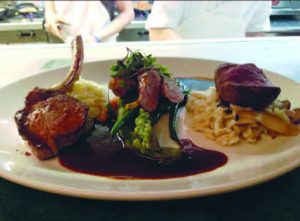 There’s always an entrée that offers a combo of game meats. On this night, it’s kangaroo, antelope and quail. Hesitant to try an exotic meat? Don’t be. The kangaroo and antelope were chicken-breast mild, with the quail notching the highest intensity of flavor on that plate. Probably the most “gamey” entrée of the night was the rosy loin of rabbit, plied as it was with a pert sun-dried tomato pesto that weighed in as refreshingly tart and plated with nutty quinoa, favas, carrots and sweet corn. Grilled bison hangar steak was served well by a red wine reduction and a spray of onions electrocuted into frizziness. The kitchen tosses a quail egg onto the plate as a game give-away. Seafood, anyone? Try the rice bowl, with trout and shrimp in the lead and a supporting cast of squiggles of egg, baby bok choy and dashi broth. Mild, once again, ruled. But it’s a comforting dish.
There’s always an entrée that offers a combo of game meats. On this night, it’s kangaroo, antelope and quail. Hesitant to try an exotic meat? Don’t be. The kangaroo and antelope were chicken-breast mild, with the quail notching the highest intensity of flavor on that plate. Probably the most “gamey” entrée of the night was the rosy loin of rabbit, plied as it was with a pert sun-dried tomato pesto that weighed in as refreshingly tart and plated with nutty quinoa, favas, carrots and sweet corn. Grilled bison hangar steak was served well by a red wine reduction and a spray of onions electrocuted into frizziness. The kitchen tosses a quail egg onto the plate as a game give-away. Seafood, anyone? Try the rice bowl, with trout and shrimp in the lead and a supporting cast of squiggles of egg, baby bok choy and dashi broth. Mild, once again, ruled. But it’s a comforting dish.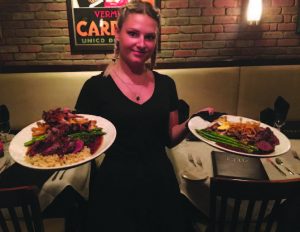 Game off, I guess. Those first years of Clydz, back in a previous century, set standards for fun and game—quite literally. The people who came together here may well have shared a spirit of adventure that wasn’t offered by other establishments in New Jersey. Frankly, I wish Clydz would reconnect with its roots and the soul of its menu. Game is on the menu; it needs to be in the concepts and the cooking, too.
Game off, I guess. Those first years of Clydz, back in a previous century, set standards for fun and game—quite literally. The people who came together here may well have shared a spirit of adventure that wasn’t offered by other establishments in New Jersey. Frankly, I wish Clydz would reconnect with its roots and the soul of its menu. Game is on the menu; it needs to be in the concepts and the cooking, too.  Adrian was doubly fortunate in that his doctors had caught his condition early, and that he would soon come under the care of the Vascular Surgical Team at Trinitas Regional Medical Center. A 78-year-old resident of Roselle Park, Adrian was referred to the team of vascular and endovascular surgeons on faculty at Rutgers-New Jersey Medical School (NJMS).
Adrian was doubly fortunate in that his doctors had caught his condition early, and that he would soon come under the care of the Vascular Surgical Team at Trinitas Regional Medical Center. A 78-year-old resident of Roselle Park, Adrian was referred to the team of vascular and endovascular surgeons on faculty at Rutgers-New Jersey Medical School (NJMS). 




 GOING BEYOND STIGMA
GOING BEYOND STIGMA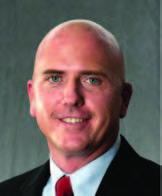 FORE!
FORE!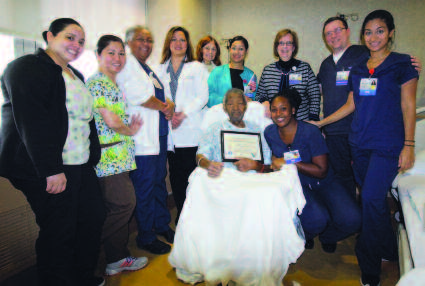 2016 PGA Championship will truly be a global event,” says Championship Director Ryan Cannon, who is responsible for managing all of the business outside the ropes — from marketing to security to government relations.
2016 PGA Championship will truly be a global event,” says Championship Director Ryan Cannon, who is responsible for managing all of the business outside the ropes — from marketing to security to government relations.
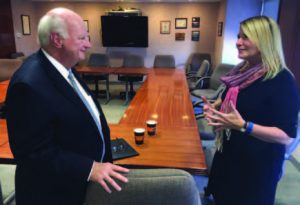 LEADERS MEET
LEADERS MEET  POSITIVE STEPS
POSITIVE STEPS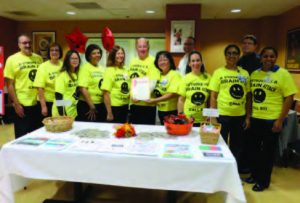 FAST ACTION
FAST ACTION  CHEESE, CHATTER & CHEER
CHEESE, CHATTER & CHEER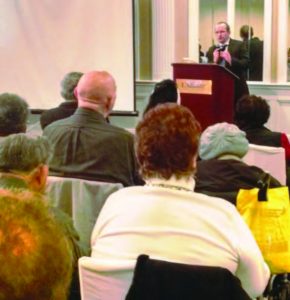 PUTTING SENIORS FIRST
PUTTING SENIORS FIRST









 Thursday • May 16 • 1:30 pm
Thursday • May 16 • 1:30 pm

 Saturday • May 11 2:00 & 3:30 pm
Saturday • May 11 2:00 & 3:30 pm




 Friday • May 10 • 8:00 pm
Friday • May 10 • 8:00 pm Friday • May 10 • 8:00 pm
Friday • May 10 • 8:00 pm

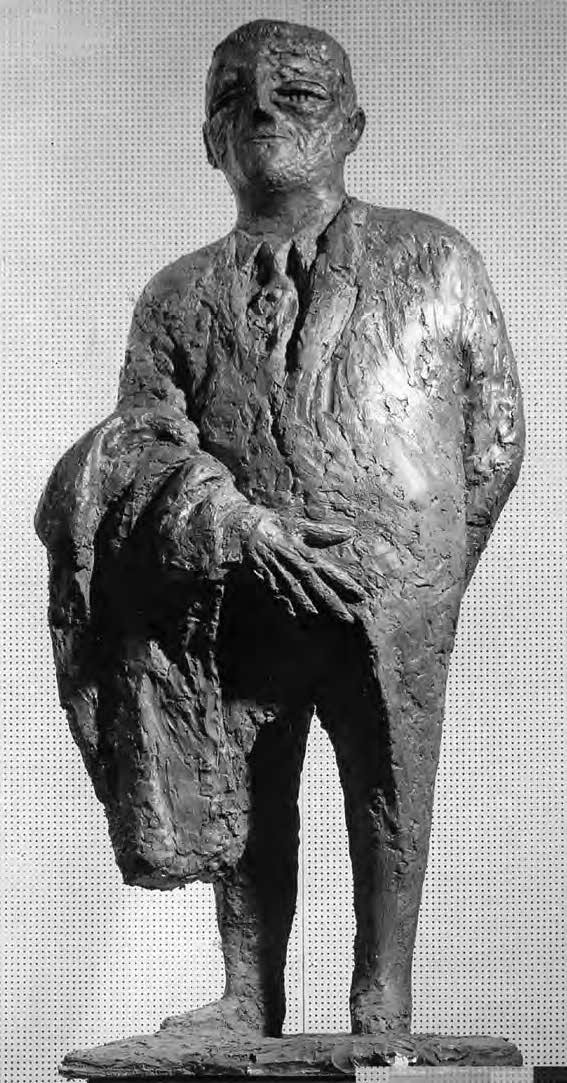







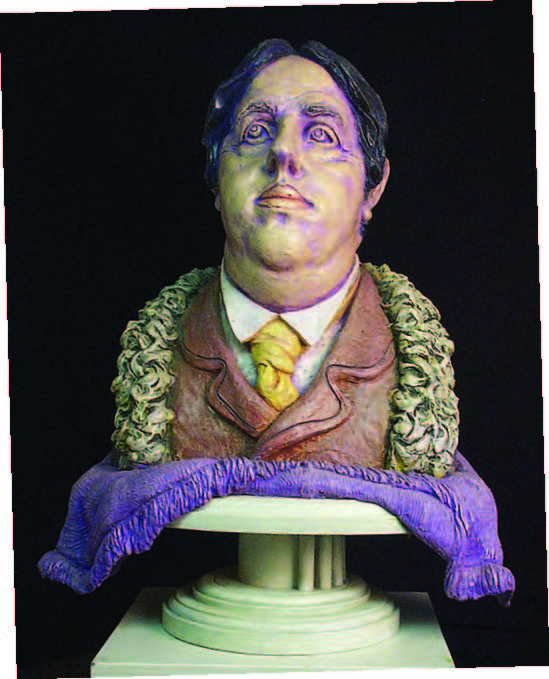

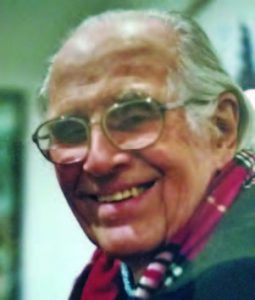 James Kearns, a longtime resident of the Morris County town of Dover, is a graduate of the Art Institute of Chicago. He served as an instructor of drawing, painting and sculpture at The School of Visual Arts in New York for three decades beginning in 1960, and has also taught at such schools as the Skowhegan School of Painting and Sculpture in Manhattan and Fairleigh Dickinson University. Kearns’s work is in the permanent collections of the Museum of Modern Art, The Whitney, Harvard University, and the Smithsonian National Collection of Fine Arts, among others.
James Kearns, a longtime resident of the Morris County town of Dover, is a graduate of the Art Institute of Chicago. He served as an instructor of drawing, painting and sculpture at The School of Visual Arts in New York for three decades beginning in 1960, and has also taught at such schools as the Skowhegan School of Painting and Sculpture in Manhattan and Fairleigh Dickinson University. Kearns’s work is in the permanent collections of the Museum of Modern Art, The Whitney, Harvard University, and the Smithsonian National Collection of Fine Arts, among others.








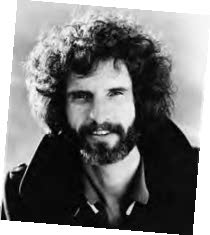 Bob Gaudio Bergenfield • B. 1942
Bob Gaudio Bergenfield • B. 1942













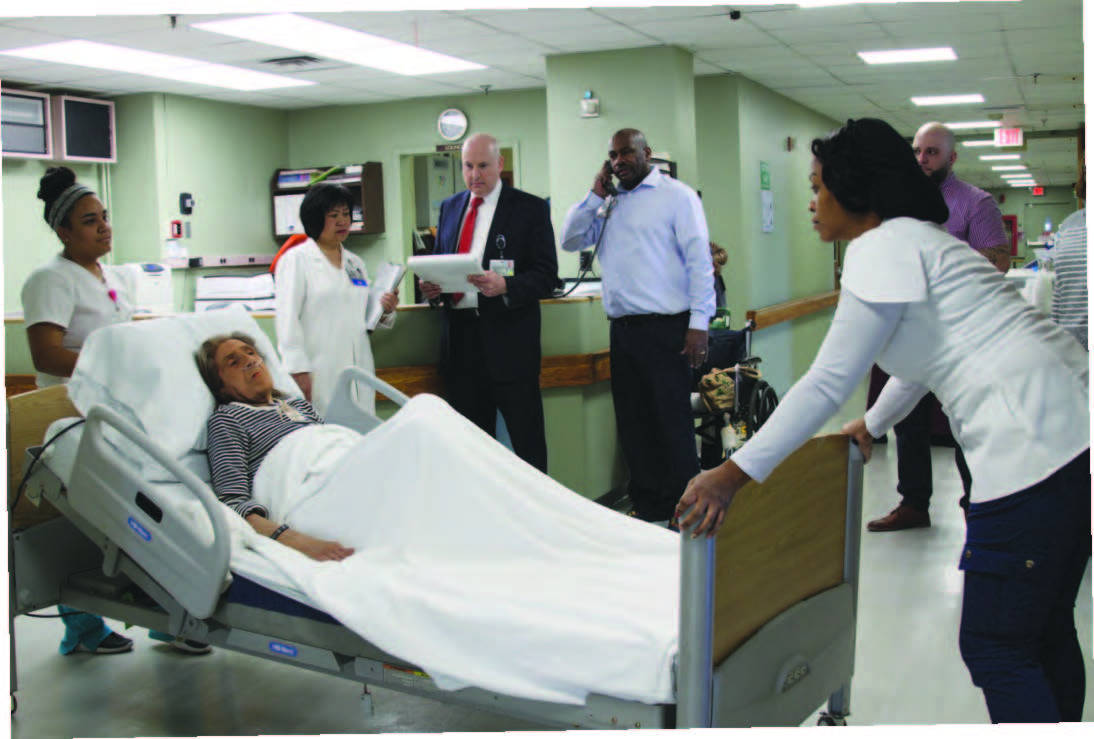

 In the summer of 2017, my mother lost her life to pulmonary fibrosis, the puzzling disease that takes your life by literally taking your breath. The illness plagued her through a 16-year-long battle that began in her 30s. She never saw it coming. She was at the height of her success when the disease crept into her life, robbing her of her dreams, her mobility and, ultimately, her time. I witnessed her excruciating decline and her diminished quality of life starting when I was in grade school. During those years, I wrestled with some difficult questions about the origin of the disease, its management and, of course, whether I too might be gasping for air one day.
In the summer of 2017, my mother lost her life to pulmonary fibrosis, the puzzling disease that takes your life by literally taking your breath. The illness plagued her through a 16-year-long battle that began in her 30s. She never saw it coming. She was at the height of her success when the disease crept into her life, robbing her of her dreams, her mobility and, ultimately, her time. I witnessed her excruciating decline and her diminished quality of life starting when I was in grade school. During those years, I wrestled with some difficult questions about the origin of the disease, its management and, of course, whether I too might be gasping for air one day. You may be familiar with my mother’s work. Her name was Tracey Smith-Owens and she conducted celebrity interviews (as Tracey Smith) for EDGE until her passing. She had a knack for engaging people—including Louis Gossett, Chazz Palminteri and Frank Vincent—in thoughtful conversation, and often carried those conversations past the magazine’s pages into civilian life.
You may be familiar with my mother’s work. Her name was Tracey Smith-Owens and she conducted celebrity interviews (as Tracey Smith) for EDGE until her passing. She had a knack for engaging people—including Louis Gossett, Chazz Palminteri and Frank Vincent—in thoughtful conversation, and often carried those conversations past the magazine’s pages into civilian life. My mother was in the hospital for over a month until peacefully departing in her sleep. I never saw it coming; pulmonary fibrosis is full of surprises. My mother and her lungs were true fighters, the doctors told me. Her ability to survive and in many ways thrive for more than a decade-and-a-half astounded them.
My mother was in the hospital for over a month until peacefully departing in her sleep. I never saw it coming; pulmonary fibrosis is full of surprises. My mother and her lungs were true fighters, the doctors told me. Her ability to survive and in many ways thrive for more than a decade-and-a-half astounded them.
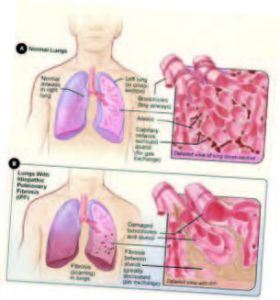






 Somos is large. You enter to a posh tavern of a space that shows how architect-designer Michael Groth likes playing with geometric shapes as much as Placencia likes stretching the parameters of traditional ingredients and classic dishes. Banquettes make little rooms out of a cluster of four round tables set for two. Semi-circular high-tops align to form the outline of another, larger circle. Chairs with short backs belly up to a bar softly lit from both the floor and the underside of the counter. There are arches as doorways and shelving and also as ornament and decor. You segue to a dining area that’s far less dramatic, set with light wood tables and chairs and lighting that’s not about creating a scene. That’s the purview of the food.
Somos is large. You enter to a posh tavern of a space that shows how architect-designer Michael Groth likes playing with geometric shapes as much as Placencia likes stretching the parameters of traditional ingredients and classic dishes. Banquettes make little rooms out of a cluster of four round tables set for two. Semi-circular high-tops align to form the outline of another, larger circle. Chairs with short backs belly up to a bar softly lit from both the floor and the underside of the counter. There are arches as doorways and shelving and also as ornament and decor. You segue to a dining area that’s far less dramatic, set with light wood tables and chairs and lighting that’s not about creating a scene. That’s the purview of the food.  You can eat the cachapa all night, if you’d like, or you can pry chunks of black bass from slivers of red onion in a ceviche that’s brightened by a vivid soup of tomatillo flecked with nibs of avocado, snips of cilantro and the suspicion of chilies. Grab the tortilla crisps angled on top to scoop up the tomatillo broth—or ask your server for a sauce spoon. The ahi tuna ceviche is richer and more spirited, with its base of coconut milk plied with rocoto and lime. In this one, use the strips of fried plantain to sop up the sauce. I couldn’t ask you to leave behind the chicharron de pescado for the chicken-filled croquettas: The silky cod crusted in quinoa and topped by both a chop of tomato salsa and an aioli infused with sweet piquillo peppers is a terrific table partner for the pert fritters deftly fried and synched to the tune of aji amarillo chile peppers.
You can eat the cachapa all night, if you’d like, or you can pry chunks of black bass from slivers of red onion in a ceviche that’s brightened by a vivid soup of tomatillo flecked with nibs of avocado, snips of cilantro and the suspicion of chilies. Grab the tortilla crisps angled on top to scoop up the tomatillo broth—or ask your server for a sauce spoon. The ahi tuna ceviche is richer and more spirited, with its base of coconut milk plied with rocoto and lime. In this one, use the strips of fried plantain to sop up the sauce. I couldn’t ask you to leave behind the chicharron de pescado for the chicken-filled croquettas: The silky cod crusted in quinoa and topped by both a chop of tomato salsa and an aioli infused with sweet piquillo peppers is a terrific table partner for the pert fritters deftly fried and synched to the tune of aji amarillo chile peppers.  If you wish, you can stop here, with a full slate of small plates that will evolve and change with the seasons and the desires of Placencia and his chef de cuisine Roberto Carnero. The main courses are scaled back in quantity and also achievement. Peruvian pot roast is shredded and served with wide noodles in a spare sauce of tomato, carrot and even green peas. Chicken is roasted with achiote, plopped on mashed potatoes and a messy splay of limp jicama slaw dressed in something that gave it a garish magenta glow. Branzino, grilled with little seasoning, was a snooze alongside yuca fries with far less personality than mainstream French fries, plain white rice and a metal ramekin of bland pico de gallo. The patatas bravas, which we paid for as an extra side, needed more of the good romesco aioli. But they had flavor.
If you wish, you can stop here, with a full slate of small plates that will evolve and change with the seasons and the desires of Placencia and his chef de cuisine Roberto Carnero. The main courses are scaled back in quantity and also achievement. Peruvian pot roast is shredded and served with wide noodles in a spare sauce of tomato, carrot and even green peas. Chicken is roasted with achiote, plopped on mashed potatoes and a messy splay of limp jicama slaw dressed in something that gave it a garish magenta glow. Branzino, grilled with little seasoning, was a snooze alongside yuca fries with far less personality than mainstream French fries, plain white rice and a metal ramekin of bland pico de gallo. The patatas bravas, which we paid for as an extra side, needed more of the good romesco aioli. But they had flavor. Don’t expect the pineapple tres leches to look like any tres leches you know: Here, it’s served as a layered parfait in a clear, tall glass, with a zippy coconut-rum sauce and chunks of passionfruit laced within—and a toasted mashmallow-y substance on top. My dining companions really liked it, as well as the squash doughnuts drizzled with a cinnamon-streaked fig relish. Me? I could’ve returned to bliss with the cachapa.
Don’t expect the pineapple tres leches to look like any tres leches you know: Here, it’s served as a layered parfait in a clear, tall glass, with a zippy coconut-rum sauce and chunks of passionfruit laced within—and a toasted mashmallow-y substance on top. My dining companions really liked it, as well as the squash doughnuts drizzled with a cinnamon-streaked fig relish. Me? I could’ve returned to bliss with the cachapa.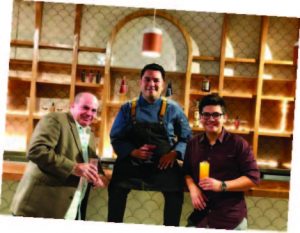 Behind the Scenes at Somos
Behind the Scenes at Somos





 If anyone can speak with authentic candor to a ballroom full of people about behavioral health and addiction, and make them simultaneously laugh out loud and nod in empathy, it’s Patrick J. Kennedy II, the former U.S. Congressman, mental health advocate and author of the New York Times Bestselling book titled A Common Struggle: A Personal Journey Through the Past and Future of Mental Illness and Addiction (Blue Rider Press, New York, 2016).
If anyone can speak with authentic candor to a ballroom full of people about behavioral health and addiction, and make them simultaneously laugh out loud and nod in empathy, it’s Patrick J. Kennedy II, the former U.S. Congressman, mental health advocate and author of the New York Times Bestselling book titled A Common Struggle: A Personal Journey Through the Past and Future of Mental Illness and Addiction (Blue Rider Press, New York, 2016). In October 2018, the Trinitas Health Foundation launched their Peace of Mind Campaign with an informative evening with Journalist Jack Ford moderating a conversation with Kennedy on “Easing the Stigma about Behavioral Health” at The Park Savoy Estate, Florham Park.
In October 2018, the Trinitas Health Foundation launched their Peace of Mind Campaign with an informative evening with Journalist Jack Ford moderating a conversation with Kennedy on “Easing the Stigma about Behavioral Health” at The Park Savoy Estate, Florham Park. The event raised $235,000 toward the $4 million renovation project to update Trinitas’ Behavioral Health facility, one of the most comprehensive departments of behavioral health and psychiatry in New Jersey. They offer specialized services for adults, children and their families, as well as services for those with various addictions, and a 98-bed inpatient facility. The hospital welcomes nearly 200,000 behavioral health visits per year. The multi-disciplinary and bi-lingual staff includes psychiatrists, psychologists, social workers, nurses, creative arts therapists, substance abuse counselors and mental health workers, offering such services as psychiatric, emergency response/screening center, inpatient, outpatient, partial hospital programs and addiction services.
The event raised $235,000 toward the $4 million renovation project to update Trinitas’ Behavioral Health facility, one of the most comprehensive departments of behavioral health and psychiatry in New Jersey. They offer specialized services for adults, children and their families, as well as services for those with various addictions, and a 98-bed inpatient facility. The hospital welcomes nearly 200,000 behavioral health visits per year. The multi-disciplinary and bi-lingual staff includes psychiatrists, psychologists, social workers, nurses, creative arts therapists, substance abuse counselors and mental health workers, offering such services as psychiatric, emergency response/screening center, inpatient, outpatient, partial hospital programs and addiction services.

